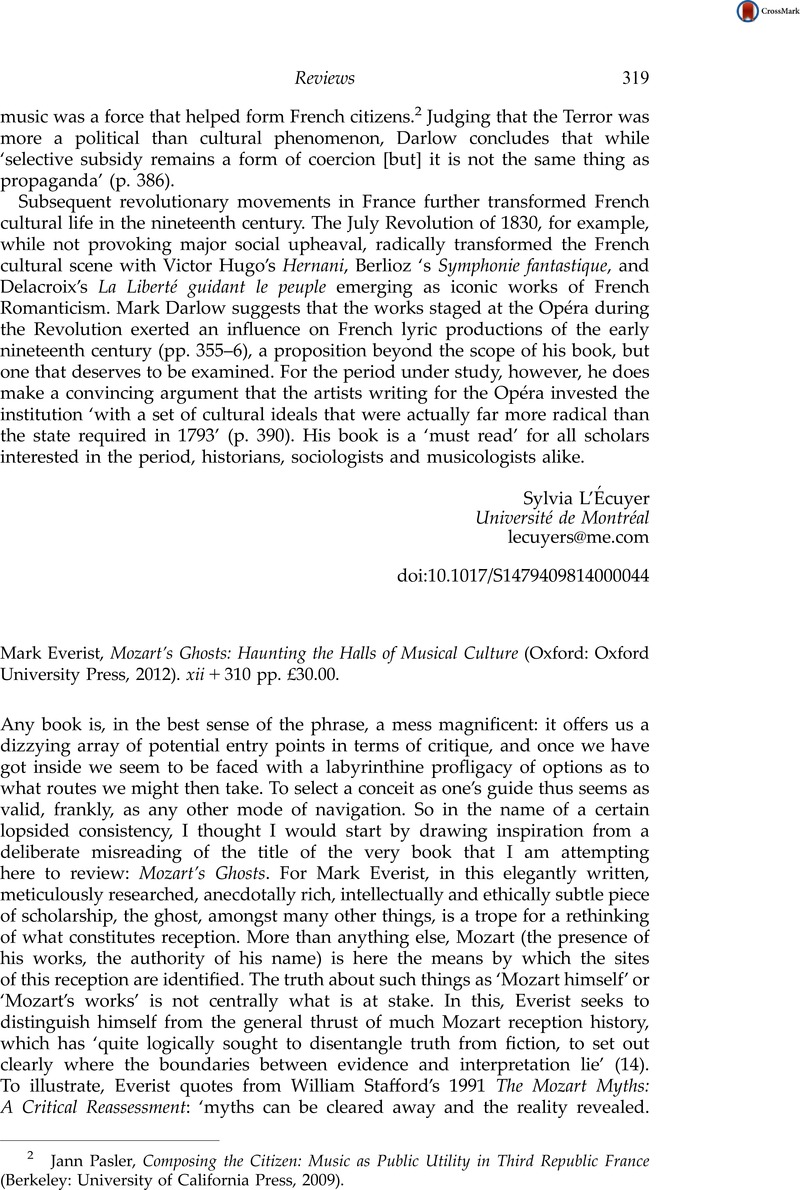No CrossRef data available.
Published online by Cambridge University Press: 19 December 2014

1 Stafford, William, The Mozart Myths: A Critical Reassessment (Stanford: Stanford University Press, 1991): 267–268 Google Scholar.
2 The Letters of Mozart and His Family, translated and edited by Emily Anderson, Vol. II (London: Macmillan, 1938): 1000–1.
3 Derrida, Jacques, Spectres de Marx: L'etat de la dette, le travail du deuil et la nouvelle Internationale (Paris: Éditions Galilée, 1993)Google Scholar, published in English as Specters of Marx: The State of the Debt, the Work of Mourning and the New International (London: Routledge, 2006). With this text, Derrida finally fulfilled his long-standing promise to address Marx head-on and to assess the nature of the relationship between deconstruction and Marxism. Two of the largest provocations of this text were 1) that after the fall of the Berlin Wall in 1989 the questions raised by Marx became not less but more pressing and 2) that deconstruction, frequently written off by its detractors as politically ineffective, was in fact thoroughly responsive to the legacy and spirit of Marx. For an interesting set of responses to Derrida's text, by a major line-up of critics and theorists, see Ghostly Demarcations: A Symposium on Derrida's Specters of Marx, edited by Michael Sprinker (London and New York: Verso, 2008).
4 Marx, Karl and Engels, Friedrich, Manifesto of the Communist Party, in The Marx-Engels Reader, Second Edition, ed. Robert C. Tucker (New York: Norton, 1978): 476 Google Scholar.